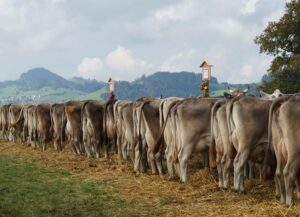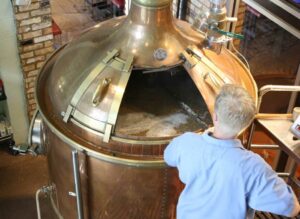Alvaro Garcia
Corn coproducts are readily available as animal feedstuffs and they are often added to livestock diets as a source of protein and energy. The protein supplied can be degraded in the rumen to a variable extent, depending on the coproduct, while energy is provided by fat and fermentable fiber. The corn wet milling process consists of steeping the raw corn to moisten and soften the kernels, milling, and then separating the kernel components through processes including washing, screening, filtering, and centrifuging. The primary end products obtained from corn wet milling are industrial corn starch, which is utilized for sweeteners, corn oil, and ethanol.
Additional end products from the wet milling process include several feed coproducts, including corn gluten feed (CGF), corn gluten meal (CGM), corn germ meal, and condensed fermented corn extractives. The feed coproduct streams from corn wet milling account for approximately 30% of the raw corn input (typically 24% is converted into CGF while about 6% ends up as CGM); nearly 66% of the corn kernel is converted into starch; and 4% ends up as corn oil.
Corn gluten meal vs. fermented corn gluten meal
Dry and wet CGM has high protein concentration (approximately 60%, w/w), with good concentration of methionine but relatively deficient in lysine. Its low total track digestibility limits its use in pre-weaned calves, since their rumen is not completely developed. It has been reported that peptides remaining from fermented corn gluten meal (FCGM) are strong antioxidants in vitro and increase the immune function in vivo. It has been reported that probiotics in the wet FCGM improve growth, antioxidant and immune capacity of post-weaned calves, it remains to be seen if these effects are also repeatable during pre-weaning.
| Corn gluten meal | Fermented corn gluten meal | |
| Dry matter | 89.2 | 88.8 |
| Crude protein, % of DM | 51.6 | 56.8 |
| Neutral detergent fiber, % of DM | 10.4 | 6.22 |
| Lysine, % of DM | 0.81 | 0.83 |
| Methionine, % of DM | 0.92 | 0.97 |
A recent feeding experiment (Jiang et al., 2020) was designed to explore the effects of replacing CGM with FCGM on growth performance of pre-weaned calves. Corn gluten meal was ground to pass through a 1-mm screen and mixed with distilled water to obtain 33% moisture. The product was then steam-sterilized at 121 °C for 20 min. Once cooled to ambient temperature, it was then inoculated with 5×108 cfu/g Bacillus subtilis and 1×109 cfu/g Lactobacillus acidophilus, mixed, and fermentated at 37 °C for 40 h. They were then refrigerated until added to the calf starter.
Holstein calves aged 6.89 ± 1.32 days were housed in individual pens (2×2.5 m; bedded with straw) and offered milk replacer. The experiment was conducted as a randomized complete block design and lasted 6 weeks. After 1 week of adaptation, calves (body weight, BW = 49.31 ± 3.12 kg; age=13.89 ± 1.32 d) were blocked by BW and age and randomly assigned to 1 of 2 dietary treatments:
- CGM group (5% CGM in the starter, DM basis)
- FCGM group (5% FCGM)
Advantages of feeding fermented corn gluten meal to calves
As expected, FCGM had less neutral detergent fiber but higher crude protein, amino acid, and small peptides than CGF (table). Calves fed FCGM grew faster and tended to have higher starter intake. Diarrhea was less severe and of shorter duration in calves fed FCGM. These calves also showed higher plasma total superoxide dismutase, catalase, total antioxidant capacity, immunoglobulin A and interferon-γ.
The Bacteroidetes group was more abundant in the rumen fluid of the FCGM fed calves (68.7% vs. 45.9%). The abundance of Proteobacteria was on the other hand lower for calves fed FCGM (13.0 % vs. 32.6%). Calves fed FCGM had feces with higher Firmicutes (56.1% vs. 43.0%) but lower Bacteroidetes and Proteobacteria (1.9% vs. 5.1% and 37.0% vs. 47.9%, respectively).
The results showed that pre-weaned calves fed FCGM had improved growth performance, a decreased diarrheal, an increased antioxidant and immunity, improved rumen function resulting from modifications in the bacterial rumen bacterial populations.
Reference:
Jiang, X., Ma, G.M., Cui, Z.Q., Li, Y., Zhang, Y.G. 2020. Effects of fermented corn gluten meal on growth performance, plasma metabolites, rumen fermentation and bacterial community of Holstein calves during the pre-weaning period. Livestock Science. 231: 103866.
© 2020 Dairy Knowledge Center. All Rights Reserved.









